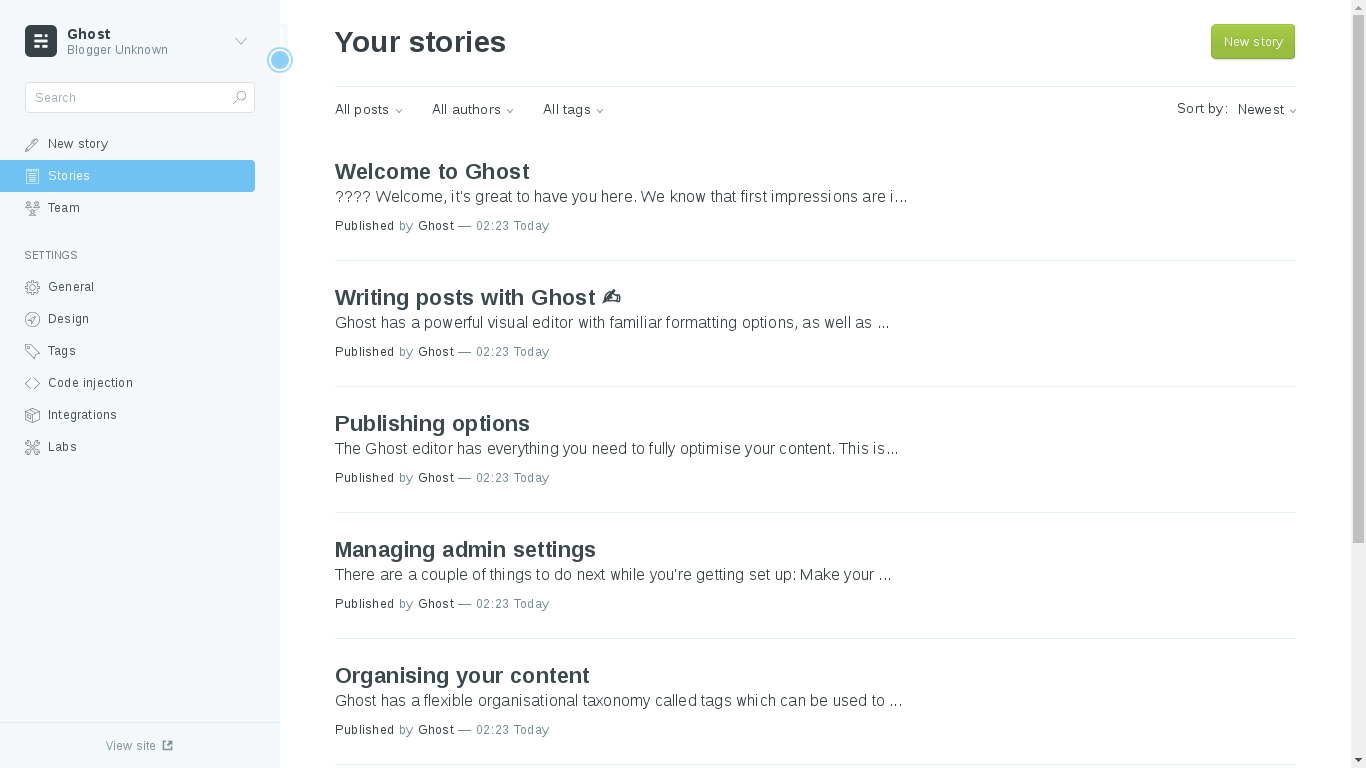You are here
Ghost
A publishing platform for professional bloggers
Ghost
A publishing platform for professional bloggers
Ghost is an open source publishing platform which is beautifully designed, easy to use, and free for everyone. Start a blog with Ghost today and learn to blog! Ghost is a lightning-fast Node.js application with an Ember.js admin client and Handlebars.js themes.
Run from browser
V 17.1
V 16.1
GitHub
This appliance includes all the standard features in TurnKey Core, and on top of that:
- Ghost configurations:
- Ghost installed from upstream source code to /opt/ghost
Security note: Updates to Ghost may require supervision so they ARE NOT configured to install automatically. See below for updating Ghost.
- Includes Nginx (webserver); pre-configured to proxy Ghost.
- Ghost installed from upstream source code to /opt/ghost
- SSL support out of the box.
- Postfix MTA (bound to localhost) to allow sending of email (e.g., password recovery).
- Webmin module for configuring Postfix.
Supervised Manual Ghost Update
Note: Check the Ghost docs to ensure that upgrading your current version to the latest is supported. Always ensure that you have a tested backup before proceeding with software updates.
Update NodeJS (recommended but perhaps required; example updating to latest NodeJS v14.x - to check current version run 'node -v'):
n 14
Or, updating to latest NodeJS LTS (double check that Ghost supports it first):
n lts
Update Ghost CLI (to latest; recommended but likely not required):
npm install -g ghost-cli@latest
Then update ghost itself. Become ghost_user and update:
su - ghost_user ghost update
Once finished, exit back to the root user:
exit
Note: ghost-cli may ask for your sudo password, by default the "ghost_user" sudo password is the same password you set for the Ghost UI admin at firstboot.
Ghost does not have a security only newsletter so we recommend that you subcribe to the Ghost Blog to keep up to date.
Usage details & Logging in for Administration
No default passwords: For security reasons there are no default passwords. All passwords are set at system initialization time.
Ignore SSL browser warning: browsers don't like self-signed SSL certificates, but this is the only kind that can be generated automatically. If you have a domain configured, then via Confconsole Advanced menu, you can generate free Let's Encypt SSL/TLS certificates.
Web - point your browser at either:
- http://12.34.56.789/ - not encrypted so no browser warning
- https://12.34.56.789/ - encrypted with self-signed SSL certificate
Note: some appliances auto direct http to https.
Username for ghost:
Login as username [email set at firstboot]
Username for database administration:
- Adminer; login as MySQL username adminer:
https://12.34.56.789:12322/ - Adminer database management web app
- MySQL command line tool; log in as root (no password required):
$ mysql --user root Welcome to the MySQL monitor. Commands end with ; or \g. Type 'help;' or '\h' for help. Type '\c' to clear the current input statement. mysql>
Username for OS system administration:
Login as root except on AWS marketplace which uses username admin.
- Point your browser to:
- https://12.34.56.789:12321/ - System control panel
- https://12.34.56.789:12320/ - Web based command line terminal
- Login with SSH client:
ssh root@12.34.56.789
Special case for AWS marketplace:
ssh admin@12.34.56.789
* Replace 12.34.56.789 with a valid IP or hostname.


